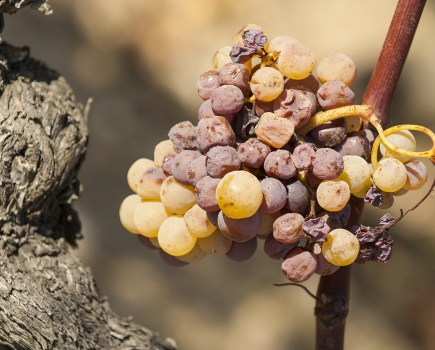The terms ‘soil health’ and ‘soil quality’ are often used to describe the same concept which identifies the ability of a soil to meet its ecosystem functions. Or to put it simply, can the soil do what is required of it? When we think of what is required from a soil we often think just in terms of plant growth and yield but there are a range of quantifiable physical, chemical and biological characteristics that when viewed holistically portray soil as a living dynamic organism.
Soil characteristics that can be determined and also have an effect on vine growth include: bulk density, soil structure, pH, nutrient content, organic matter content, microbial diversity, earthworm numbers and soil respiration. Different management practices within the vineyard can alter these parameters and vine growth enormously.
When thinking of soil management most people initially think of nutrient content and pH which my colleague Julian Searle covered last month. There are however many other operations that we do: the addition of organic matter as a mulch of composted green waste or a green manure crop incorporated or mown and left in the vine row, subsoiling, weed control by either the use of herbicides or soil disturbance for example by use of a Rollhacke.
These all have an effect on soil health, addition of organic matter can decrease bulk density, increase cation exchange capacity (the ability for a soil to hold nutrients), increase water holding capacity and increase microbial biomass. Subsoiling can reduce compaction and waterlogging preventing the soil from becoming anaerobic with an associated reduction in microbial biomass.
Microbial Biomass is particularly important as the soil microbial community plays a vital role in relation to plant growth and fulfils a range of functions, including mineralisation of nutrients, nitrogen fixation, water and nutrient uptake and root protection from pathogens.
Certain weed management practices can also impact soil macro and micro-organisms. Mulches such as composted green waste supress annual weeds but promote perennial weeds such as thistles. Herbicides offer effective control but by some are viewed as undesirable and environmentally unfriendly. Cultivation or soil disturbance, however has a down side as it can damage soil fauna such as earthworms, breaks fungal hyphae such as Mycorrhiza and leads to a loss of soil organic matter and microbial biomass.
Of the soil based operations we do, weed control is the most common and through the route we use, can have the greatest effect on soil microbial biomass and hence crop growth and yield. It is worth noting that in agriculture, the move from ploughing to a minimum or no tillage system is one of the principles of conservation agriculture.



